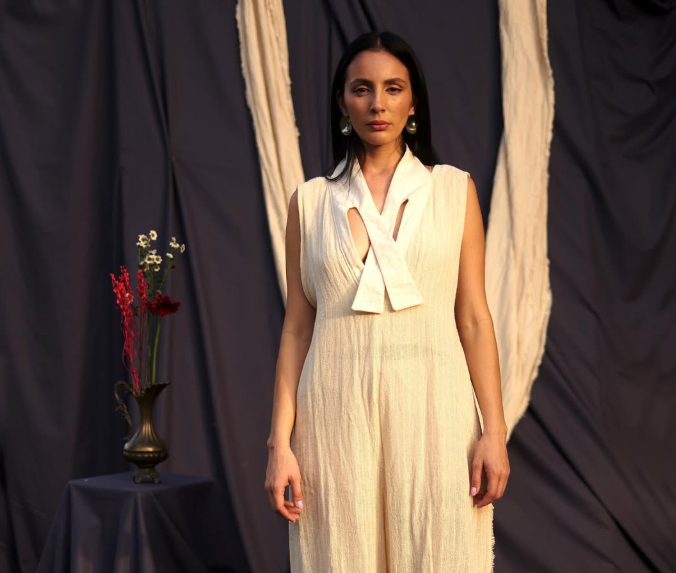How many hands are behind Ko Huella. Liza Knezovich and Anabella Oviedo are the creators of this Chaco-based cotton clothing brand. Their story weaves together practices, knowledge, and dialogues that connect design, soil, seeds, cooperatives, and experimentation.
Ko Huella’s raw material comes from the work of two local cooperatives. They use natural cotton grown without pesticides and supplied by the Inimbó Cooperative Textile Network. They also use agroecological cotton produced with guazuncho seeds. The latter, promoted by the Ramón Carrillo Foundation, is part of a transformative program that granted a quarter of a hectare to farming families in Pampa del Indio, Las Palmas, and JJ Castelli to implement agro-sustainable practices. The manual, small-scale approach to work generates variables that modify the cotton bud. Rain, drought, and pests expose this raw material to various stresses that are then embraced as treasures and humanize the production scale when the garments are made.

That’s why a ball of agroecological cotton yarn has unique characteristics, details that mass production cannot handle. What might be seen as a flaw, in artisanal hands, becomes a distinctive feature of beauty. It challenges us to work, overcoming unforeseen circumstances and incorporating the idea of uncertainty into the process and the project, a variable that can change everything.
For Liza and Anabella, textiles are the centerpiece of the design process. With this premise as a rule, the rational use of raw materials becomes a priority. To materialize this idea, they envision garment typologies that don’t require sizing curves. In this way, they generate comfortable, versatile, timeless, and genderless silhouettes that can be worn by different body types. The development of these geometric patterns minimizes scraps, which are collected and then reused to generate textures in new designs.
“A ball of organic cotton yarn has details that the industry would see as flaws. For us, that’s beauty.”
The garments are made entirely of cotton, including the seams. Once finished, they are hand-dyed. This allows for resource control and uniform colors. This is also done in the province of Chaco and in partnership with Julieta Tabbia of Arhat, her sustainable textile design brand. They use natural dyes, organic pigments extracted from plants, insects, and minerals. For example, they achieve gray with quebracho wood; green with onion skin; and a mauve hue with a mixture of cochineal and avocado pits. The design’s intention is to move away from the more conventional palette.
Ko Huella’s first collection consists of 31 pieces. «Some are made from knit fabrics, creating languid, ethereal garments with a soft drape that generates movement,» explains Anabella Oviedo. «Others achieve their structure through the use of flat fabrics and stitching over multiple layers of pleated fabrics. Some feature collars made from agroecological cotton yarn, crocheted by Mary (María Antonia Cañete), from the La Leonesa community, who is connected to Ko Huella through the Carrillo Foundation.»
Today’s consumer logic identifies a user profile that is aware that their purchasing power has an impact on the environment. Therefore, they choose products that guarantee sustainability standards and are transparent when communicating the value chain involved.
“Ko Huella garments are 100% traceable,” says Oviedo. “Each stage and each person involved is identified, and the link that unites them is fair trade.” This value is printed on the four labels that accompany each garment. The first indicates the traceability of the raw material; the second, the people involved in the production process that transforms the cotton bud into a textile; the third, the equipment and dyeing processes; and the fourth, garment measurements and the care it requires.
One last compliment! The garments are made from 100% natural or agroecological cotton. They’re cooler because they’re acrylic-free and dyed without petroleum derivatives.
In the maelstrom of life, it’s worth rethinking how we connect with the objects around us, what impact they have on the environment and our bodies.

